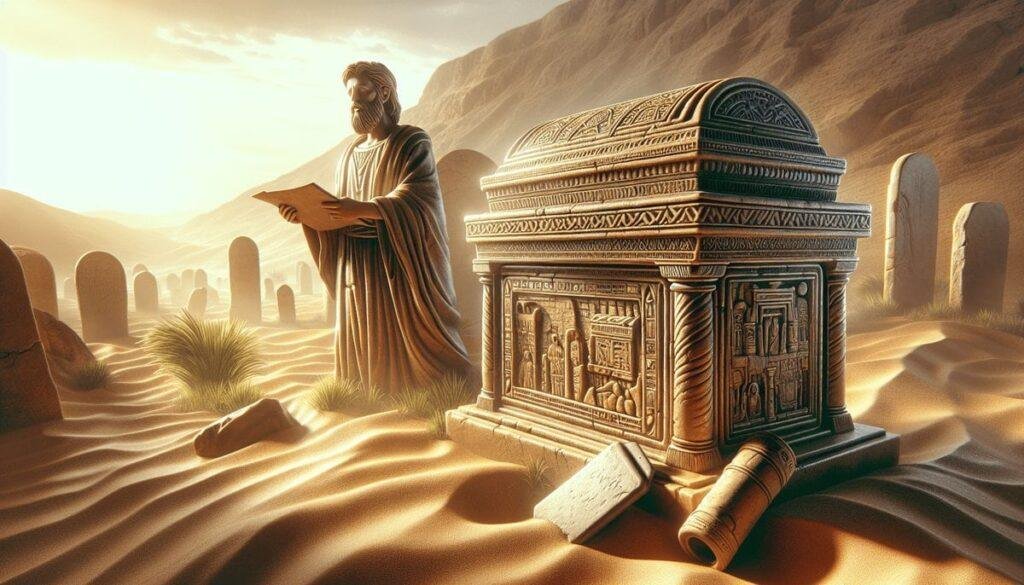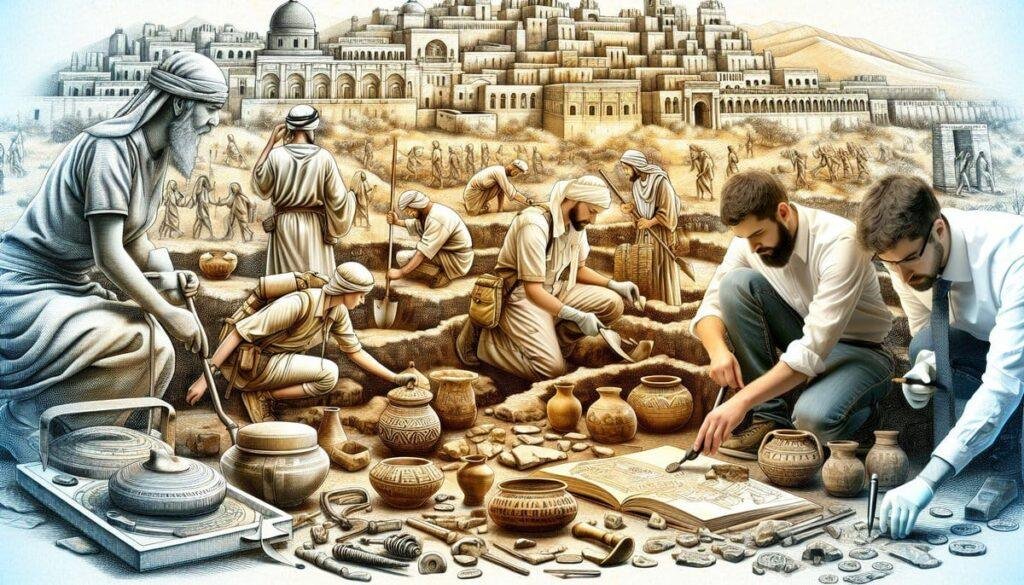What do you think the Ark of the Covenant symbolizes in today’s world?
The Ark of the Covenant: A Sacred Vessel
You might think of the Ark of the Covenant as a mere artifact from biblical tales, but it carries tremendous weight in cultural and theological discussions. The Ark, described in the Book of Exodus, was not just a container for the Ten Commandments; it was a powerful symbol of the relationship between the divine and humanity.
Thus, delving into its significance reveals insights about mercy and justice that resonate, even in this modern age. Those themes are not just historical; they are alive in our daily interactions and moral decisions.
The Origin of the Ark
You may find it fascinating that the Ark is rooted deep within the narrative of the Israelites as they wandered in the desert. According to Exodus 25:10-22, God gave specific instructions to Moses regarding how to construct the Ark. Crafted from acacia wood and overlaid with gold, its design was as much about aesthetics as it was a testament to divine instructions.
By understanding its origin, you not only recognize its material beauty but also appreciate its profound thematic depth.
Symbolism of the Ark
In the ancient world, objects often held meanings that went beyond their physical form. The Ark was a representation of God’s covenant with His people.
Here’s a handy table showing some key symbols associated with the Ark:
| Symbol | Meaning |
|---|---|
| Gold | Purity and divinity |
| Acacia Wood | Resilience and endurance |
| Cherubim | Divine presence and guardianship |
| Tablets of Law | Guidance, rules, and ethical foundations |
You can see how each of these elements contributes to the larger narrative of mercy and justice. The gold signifies the divine, while the wood represents humanity – a fusion that’s essential for understanding the dual nature of divine governance.

Mercy and Justice: A Delicate Balance
Alright, let’s tackle one of the heavyweight themes surrounding the Ark: the balance of mercy and justice. This is a topic weighty enough that it could make anyone feel as if they’ve got an entire universe resting on their shoulders.
Biblical Framework
The Ark served as a focal point of mercy and judgment throughout biblical history. For instance, when the Israelites sinned, they were punished; yet, there was always a path toward forgiveness. The ritual of atonement, involving the Day of Atonement (Yom Kippur), symbolized how God could offer mercy despite human failings.
To fully appreciate this, think of the Ark as a bridge between two extremes—facilitating divine judgment while also offering avenues for redemption. Mercy and justice aren’t opposing forces; they are intertwined, much like threads in a finely woven tapestry.
Archaeological Findings
You might be wondering what current archaeological findings reveal about the Ark. While we haven’t uncovered the Ark as an artifact, excavations in locations like Jericho and Jerusalem bring new perspectives. Some scholars cite findings of ancient altars and inscriptions that might correlate with the narrative surrounding the Ark.
Historical Context
Understanding the historical backdrop is crucial. The Ark’s significance intensified during the reign of King David, who brought it to Jerusalem. This city then became a central place of worship and administration.
Here’s a table that highlights key historical moments related to the Ark:
| Year | Event | Historical Significance |
|---|---|---|
| 1446 BC | Exodus from Egypt | Birth of the Israelite nation |
| 1000 BC | Ark brought to Jerusalem | Establishment of Jerusalem as the holy city |
| 586 BC | Destruction of the First Temple | Loss of the Ark and spiritual center |
As you can see, the Ark has been at the center of pivotal moments in Israel’s history, marking transitions in both divine and communal relationships.

Modern Implications of the Ark
So, what does the Ark mean for you today? The interplay of mercy and justice isn’t confined to ancient texts. It reverberates through contemporary issues, from courtroom trials to personal relationships. This ancient artifact teaches us that justice serves to uphold morality, but mercy allows us to learn and grow.
Application in Daily Life
In your everyday life, consider how you apply these values in your decisions. Do you lean more toward justice, holding others accountable without room for compassion? Or do you extend mercy, possibly overlooking important boundaries?
Finding that equilibrium is as relevant now as it was when the Ark was first constructed.
Theological Implications
You don’t have to be a theologian to grasp the deeper theological significance of the Ark. In many religious interpretations, the Ark embodies God’s desire for relationship with humanity—blending law (justice) and grace (mercy).
Connection to Jesus
Many Christians see the Ark as a prefiguration of Christ—a foreshadowing of how God’s mercy would ultimately be fulfilled in the New Testament through Jesus. Just as the Ark was a physical manifestation of God’s presence, Christ is viewed as the ultimate embodiment of grace and truth.
You can reflect on these dynamics whenever you’re faced with moral dilemmas. Is there a voice of mercy urging you to respond with kindness, even when justice demands accountability?
Cultural Significance of the Ark
Culturally, the Ark has transcended its initial religious confines, becoming a symbol of hope and resilience. In literature, art, and film, references to the Ark often evoke themes of faith and divine intervention.
Modern Adaptations
You can spot its influence today. From the epic adventures depicted in movies to the countless books that romanticize its quests, the Ark remains a powerful symbol. It invites you to think about the eternal struggle between right and wrong and the grace that allows humanity to navigate these conflicts.
Contemporary Reflections on Mercy and Justice
As you witness the moral complexities of today’s world, don’t forget the lessons that the Ark represents. Whether in discussions about social justice, environmental responsibility, or personal ethics, the balance of mercy and justice is critically important.
Social Justice Movement
For many, the Ark is symbolic of the ongoing fight for justice, especially in marginalized communities. The concept of mercy enables us to address systemic injustices with compassion, recognizing the humanity of those who have suffered under unfair systems.
Summary
You’ve journeyed through a rich tapestry of history, culture, and theology surrounding the Ark of the Covenant. Coming from ancient texts, it vibrates with meanings that go beyond time. The delicate balance of mercy and justice is inherent not only in theological understanding but also in everyday life.
As you navigate your life’s moral labyrinth, take a moment to reflect on the ancient wisdom wrapped up in this iconic artifact. Just like the Ark stood at the heart of ancient Israelite life, may the principles of mercy and justice stand at the core of your interactions and decisions.
Consider that balance – it’s not just an ancient relic; it’s a timeless guide for navigating morality today. So the next time you face a tough choice, remember the Ark and the lessons it embodies. It might just help you find your way.


